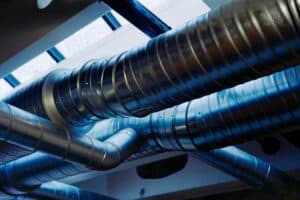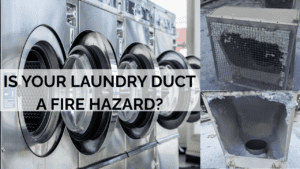[vc_row][vc_column][vc_column_text]Poor indoor air quality in schools directly impacts the health, wellbeing and education of our children.
3.4 million children are currently at risk of long term health conditions and infectious diseases due to poorly ventilated schools across the UK. A recent Harvard Research study found that cognitive performance scored 60% higher in tests in ‘green spaces’.
The evidence supports one conclusion, that poor indoor air quality hinders a child’s future and that it’s vital we take immediate steps to improve it.[/vc_column_text][vc_column_text]
The impact of poorly ventilated classrooms
CO2 levels between 400 – 1000 ppm in an occupied room are classed as average with good air exchange, leading to typical concentration levels. CO2 levels above 1000 ppm have a negative impact on cognitive function and have been directly linked to serious health conditions, such as asthma as well as symptoms including anxiety, lack of concentration and tiredness.
Collected together, these symptoms significantly lower student productivity and impact students’ academic abilities.
Even with this danger though, CO2 levels in schools can regularly climb even higher, exceeding 2500 ppm and causing children to lack focus and feel drowsy.
Studies have found that test scores are significantly worse in rooms with 2,500 ppm CO2 than in those with 1,000 ppm, demonstrating the seriousness of the issue for educational teams across the country.
These findings have been strong enough to prompt action, leading to a new £25m government initiative being put in place to supply CO2 monitors to schools and colleges with over 300,000 monitors being issued – free to all state-funded facilities. A good step in the right direction but not enough to solve the challenges ahead – with more expansive and robust air quality monitoring systems required.[/vc_column_text][vc_column_text]
How indoor air quality is linked to student absences
Too much CO2 not only affects student performance and concentration, but can also have serious health implications for children who have asthma or allergies, and can cause wheezing.
1 in 11 children have asthma in the UK, with many of those children losing around 13.8 million school days due to their illness.
A staggering 40% of children in the UK have been diagnosed with an allergy. It’s key that parents have confidence in the school’s capability in caring for their child and allergy – and providing good indoor air quality contributes to building the best environment.
Sick Building Syndrome can also occur when the indoor air quality inside a school is compromised. Both staff and students can suffer from symptoms which occur due to being inside a particular building and include headaches, itchy skin, sore eyes and throat and tiredness.
Children as young as four are entering school buildings across the country and being exposed to these conditions whilst their immune systems are still developing, which can lead to prolonged illness and long periods of absence.[/vc_column_text][vc_column_text]
Staff absence impacts student performance
Poor indoor air quality can also lead to increased teacher absences. In some schools substitute staff may be required to cover which can be costly and hinder children’s learning, as their routine is disrupted and temporary staff get to grips with pupils’ unique learning needs.
When indoor air quality is improved it can lead to a reduction in teacher sick days, and even an increase in student performance. 58% less sick leave is taken by staff and faculty when indoor air quality improves, whilst students showcased faster and more accurate responses to colour, picture memory, and word recognition – even showcasing a 3% increase in maths and reading test scores.
Without the continuous monitoring of indoor air quality, schools will be forced to deal with the impracticalities of staff and student absences and a reduction in both staff and student productivity, ultimately impacting results across league tables.[/vc_column_text][vc_column_text]
How schools can improve indoor air quality
Investing in CO2 sensors and air quality technology allows schools to continuously monitor indoor air quality. This data can then be used to make informed decisions such as installing or improving ventilation systems, or a simple reactive decision such as opening a window.
Solutions incorporating UVGI technology can inactivate and prevent the growth of harmful microbes, limiting the spread of airborne diseases.
Plasma Clean, a trusted pioneer in innovative and affordable infection prevention solutions, delivers life-changing air quality technology to the education sector.
We ensure the highest grade nondispersive infrared sensors (NDIR) are used to monitor indoor air quality, which are recommended by the Chartered Institution of Building Services Engineers (CIBSE). These premium quality sensors monitor CO2 levels, temperature, humidity, radon, VOCs, pressure, light and virus risk to deliver accurate, real-time data.
Ignoring the impact and consequences of poor indoor air quality can have serious implications for educational facilities. From soaring absences and increased costs to ailing results and even compromised safeguarding of pupils, the dangers are clear and the solutions are available to you today.
From the hallway to the classroom, we provide tried and tested, effective solutions for both old and new buildings – utilising key methods, such as upper room UVC, which has been used in schools for more than 80 years.
All parents have the right to know that their child’s health, wellbeing and education isn’t being negatively impacted by poor air quality. It’s time for schools to tackle this issue head-on.
To find out more about our monitoring and ventilation systems and how we can support your school contact us at [email protected].[/vc_column_text][/vc_column][/vc_row]








